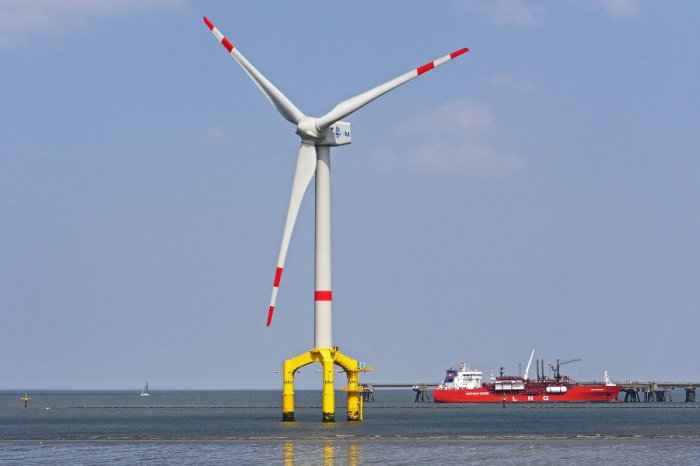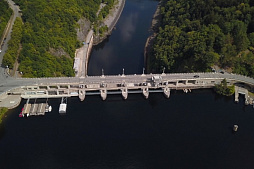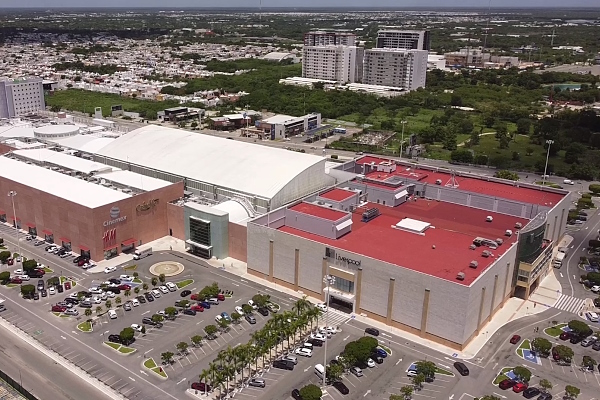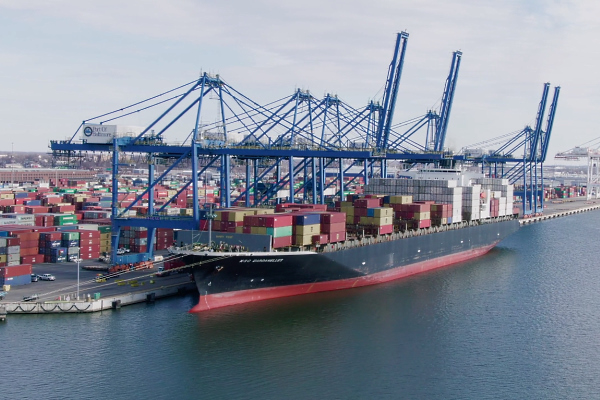After receiving the necessary documents (application form and project presentation), our team will try to review your request as soon as possible, and leading experts will offer the best options for project funding.
Whether you are an entrepreneur looking to invest in a hotel, resort, or other hospitality projects, understanding the principles of financing and lending in this sector is crucial for success.
As the global tourism industry continues its rise, surpassing about 1.3 billion international tourist arrivals annually, the demand for inspiring accommodations and attractions has never been more profound. In 2023, the global tourism revenue broke the $2.3 trillion mark, demonstrating an annual growth rate of about 0.8% over the past 5 years (despite the acute crisis caused by the pandemic).
The tourism property sector, a pivotal player in this dynamic realm, stands as a testament to the aspirations and ambitions of entrepreneurs looking to leave a mark on the travel terrain.
In this labyrinth of hospitality and scenic wonders, the importance of project financing cannot be overstated. Whether it's the construction of a luxury resort on a pristine beach or the development of an eco-friendly mountain retreat, substantial financial backing is the cornerstone that transforms visions into reality. Estimates for the capital cost of building a 100-bed luxury resort currently range from $30 million to $150 million, depending on the infrastructure, location and project type.
Large-scale investment projects in the tourism property sector demand not only creativity and vision but also a robust financial foundation.
Understanding tourism property financing
The tourism property sector presents a distinctive set of challenges and opportunities in the realm of financing.One of the primary challenges is the cyclicality of the tourism industry, with economic downturns and unforeseen events impacting local travel demand. This volatility requires financing structures that can withstand fluctuations in revenue. Moreover, the long gestation period for large-scale projects, such as resort developments, poses liquidity challenges, demanding patient capital.
Opportunities, on the other hand, arise from the sector's resilience and continuous global expansion.
Investors can benefit from the increasing trend of experiential travel, driving demand for unique and luxurious accommodations. The rise of sustainable tourism also presents an avenue for financing environmentally responsible projects, aligning with the growing eco-conscious consumer base.
Highlighting the diversity of tourism properties is crucial. Financing needs vary between traditional hotels and resorts, where the emphasis is on guest experience and amenities, and entertainment complexes, which require enormous upfront investments in high-tech attractions and infrastructure. Navigating this incredible diversity necessitates tailored financial solutions that acknowledge the distinct characteristics of each type of property.
Market trends in tourism industry
Recent trends in the tourism industry are really reshaping financing decisions for large businesses in the sector.The advent of technology, including the rise of online booking platforms and virtual experiences, has altered consumer behavior, influencing the design and financing of properties to incorporate cutting-edge tech. The shift towards sustainable and eco-friendly tourism is driving investments in green initiatives and environmentally conscious property development.
Moreover, the impact of global events, such as pandemic, has accelerated trends like remote work and altered travel patterns. This has prompted a reassessment of investment strategies, with a focus on flexible and adaptable properties.
The rise of niche tourism markets, like wellness and adventure travel, creates new financing opportunities for properties catering to specialized interests.
Making informed decisions in the financing of tourism real estate projects requires understanding of the challenges posed by industry cyclicality and the need for long-term capital. Simultaneously, recognizing the diverse nature of tourism properties and staying attuned to market trends is crucial choosing optimal financing options that align with the evolving demands of the industry.
Financing tourism property by countries and regions
Tourism property projects financing varies globally, reflecting regional economic peculiarities.In North America, traditional bank loans, private investors, and Real Estate Investment Trusts (REITs) are common capital sources. Europe utilizes a mix of bank lending, government grants, and private equity. In Asia, public-private partnerships, foreign direct investment, and government-backed funds drive real estate financing. The Middle East often relies on sovereign wealth funds, while Africa explores options like multilateral development banks and sustainable tourism initiatives.
Oceania, with its island nations, attracts foreign investments, government incentives, and environmentally-focused grants for tourism property projects.
The diverse financing approaches and options are related to the unique dynamics of each region. In addition, proponents of large tourism projects must take into account the general challenges specific to a given host country. Our experts help clients from all over the world find personalized solutions that meet their needs and expectations.
Europe: Germany, UK, France, Italy, Austria, Turkey etc.
Europe, with its rich history and diverse cultures, boasts a tourism property market that spans from historic castles to contemporary resorts. Countries like France and Italy attract millions with their cultural heritage, while luxury destinations like Switzerland appeal to those seeking alpine retreats. The challenge here lies in balancing preservation efforts with the demand for modern amenities.Asia-Pacific: China, Japan, Korea, India, Indonesia, Australia
Asia has recently witnessed a surge in tourism property development, with countries like Thailand, Japan, and Indonesia becoming hotspots. Exotic beaches, cultural treasures, and bustling cities drive resort and hotel investments. However, managing sustainable growth and infrastructure to meet escalating demands is still a key concern in this region of the planet.North America: United States, Canada and Mexico
In North America, the tourism property market is a tale of two landscapes. Huge urban centers like New York and Las Vegas thrive on expensive accommodations, while national parks attract nature enthusiasts. Striking the right balance between city sophistication and natural serenity is crucial for sustainable development of tourism property projects.Middle East: UAE, Saudi Arabia etc.
The Middle East is synonymous with opulence, and countries like the UAE have transformed their deserts into luxurious destinations. Dubai, for instance, is a beacon of extravagant tourism property development. However, maintaining a delicate equilibrium between tradition and modernity remains a challenge for businesses that choose this region.Africa: Egypt, Nigeria and South Africa
Africa's tourism property market is marked by its wilderness and cultural richness. Safari lodges, beachfront resorts, and cultural hubs draw visitors. Challenges include infrastructure development, political stability, safely issues and wildlife conservation efforts. All of the above makes tourism projects on the continent, especially in Non-Mediterranean Africa, quite complex and, to a certain extent, risky investments.South America: Brazil, Argentina, Columbia etc.
From the Amazon rainforest to the Andes mountains, South America's tourism property market is characterized by its unique landscapes. Countries like Brazil and Peru showcase cultural heritage alongside natural wonders with enormous untapped potential for tourism development. Sustainable practices and community involvement are key considerations.Oceania: Fiji, Papua New Guinea, New Zealand
The islands of Oceania, including destinations like Fiji, offer paradisiacal settings for modern and traditional tourism property development. Balancing environmental conservation and meeting the rising demand for exclusive getaways pose ongoing challenges for businesses.Inside the tourism property each country and region contributing a unique flavor to the global tapestry of travel and hospitality. Before making financial decisions regarding to new projects, financial team should explore the nuances of this market, examining key trends, challenges, and opportunities across various corners of the world.
Financing options for tourism properties
In the heart of modern tourism industry, where dreams take the form of luxury resorts, hotels, and breathtaking landscapes, there exists a silent force that propels these business initiatives into reality – long-term financing and investment loans.This is a world where the majestic structures that adorn postcards and travel brochures emerge not only from the architect's blueprint but also from the web of advanced financial engineering models and flexible investment projects.

Traditional loans vs specialized financing
Traditional loans are financial arrangements provided by banks or financial institutions with fixed terms, interest rates, and repayment schedules, commonly requiring collateral and adherence to stringent eligibility criteria.Some characteristics of bank loans include the following:
• Lower risk for lenders, often requiring a strong credit history and collateral.
• Generally less flexible in adapting to the needs and challenges of the tourism industry.
• Longer approval times due to extensive documentation and evaluation processes.
• Often comes with lower interest rates but may have higher upfront costs.
Specialized financing refers to tailored financial solutions designed for specific industries or sectors, such as tourism properties, offering flexibility, industry expertise, and customized terms to address the unique challenges and needs of the targeted market.
Specialized options encompass tailored solutions, including hospitality loans for lodging, leisure and entertainment financing for attractions, green financing for sustainability, tourism development grants, franchise financing, resort financing for amenities, destination management financing, each addressing specific needs in the diverse world of tourism property development.
Some important characteristics of this type of financing include:
• Higher perceived risk may demand a comprehensive plan but allows for tailored solutions.
• Offers more adaptability, considering the nuances of tourism property development.
• Potentially quicker approvals, given a specialized understanding of the tourism sector.
• May incur higher interest rates, reflecting the perceived risk, but sometimes could offer more cost-effective solutions for the industry's specific needs.
The choice between traditional loans and specialized financing options for tourism properties depends on the project's nature, risk profile, and the level of adaptability and customization required in the financing arrangement. A comparison of these options is provided below.
Table: Pros and cons of loans and specialized options for financing tourism real estate projects.
| Financing options | Advantages | Disadvantages |
| Traditional loans | Stability: Traditional bank loans offer stability with fixed interest rates and predictable repayment terms. | Stringent criteria: Banks often have strict eligibility criteria, making it challenging for newer or riskier projects to secure financing. |
| Accessibility: Established businesses with a strong credit history may find traditional loans more accessible. | Processing time: The approval process for traditional loans can be lengthy, potentially delaying project timelines. | |
| Broad use: Funds from traditional loans can be used for various purposes, providing flexibility in financing. | Limited flexibility: Fixed terms may limit adaptability to changing market conditions or unexpected challenges. | |
| Specialized options | Tailored solutions: Specialized financing options cater specifically to the unique needs of the tourism industry, offering custom-tailored solutions. | Higher costs: Specialized financing might come with higher interest rates or fees due to the perceived risk associated with the tourism sector. |
| Industry expertise: Lenders specializing in tourism properties often possess a deep understanding of the sector, allowing for more informed financial partnerships. | Niche requirements: Some specialized lenders may have stringent criteria or specific requirements that limit accessibility. | |
| Flexible terms: These options may provide more flexible terms, accommodating the cyclical nature of the tourism industry. | Limited use: Funds may be designated for particular aspects of tourism property development, restricting versatility. |
Government programs and incentives
Government-backed financing programs and incentives are pivotal resources for large businesses in the tourism sector, offering financial support and fostering growth.These may include grants, low-interest loans, or tax incentives aimed at stimulating tourism-related developments.
For instance, in the aftermath of the COVID-19 pandemic, many governments globally introduced relief packages and grants to aid the recovery of the tourism industry. Additionally, initiatives promoting sustainable tourism or infrastructure development often come with financial backing, encouraging large businesses to align their projects with government goals.
Grants
Governments sometimes offer grants to large tourism businesses for specific purposes, such as infrastructure development, sustainability initiatives, or community engagement projects. Grants provide non-repayable funds, reducing the financial burden on businesses and encouraging them to undertake projects that align with government objectives.Low-interest loans
Government-backed low-interest loans offer large businesses in the tourism sector access to capital at favorable interest rates, promoting economic development and job creation. These loans provide affordable options, fostering growth while minimizing the long-term financial impact on businesses.Tax incentives
Tax incentives, such as deductions or credits, may be granted to tourism businesses for specific activities, such as investments in infrastructure, conservation efforts, or job creation. Businesses can reduce their tax liabilities, freeing up funds for reinvestment in their operations or expansion.Industry-specific programs
Governments may introduce targeted programs catering to the tourism sector, addressing challenges unique to the industry, such as economic downturns or global crises. These programs offer sector-specific support, ensuring that the industry remains resilient and can recover from external shocks.Private lenders and partnerships
Collaborating with private lenders and forming strategic partnerships provides large businesses in the tourism sector with a spectrum of benefits.Private lenders often offer more flexibility than traditional banks, tailoring financing solutions to accommodate the unique needs and risks of tourism projects. Furthermore, strategic partnerships with private investors or financial institutions can bring not only financial support but also industry expertise and networks.
Such collaborations can enhance the viability and success of tourism properties, especially in cases where large-scale investments or specialized knowledge is required. In essence, these partnerships create a symbiotic relationship, leveraging resources and expertise for mutual growth.
Private lenders
Private lenders, including investment firms, hedge funds, and non-banking financial institutions, offer solutions with greater flexibility than banks. Businesses can negotiate terms tailored to their needs, and private lenders have a faster decision-making process, enabling quicker access to capital.Strategic partnerships
Collaborating with private investors or financial institutions involves forming strategic partnerships where both parties contribute resources, expertise, and networks. Large businesses gain not only financial support but also industry insights, access to a broader customer base, and shared risk, making the venture more robust and potentially more successful.Equity financing
Private investors may offer equity financing, where they become partial owners in exchange for capital infusion. While businesses relinquish partial ownership, equity financing provides an injection of funds without incurring debt, and investors share in the success of the venture.Mezzanine financing
Mezzanine financing combines elements of debt and equity, offering businesses a hybrid solution where lenders receive both interest payments and equity warrants. This option provides flexibility in repayment terms and potential equity upside, making it attractive for businesses seeking a middle ground between traditional loans and equity financing.Investment loan strategies in tourism property financing
Securing investment loans is a pivotal step towards transforming ambitious visions into tangible realities.From the professional crafting of a comprehensive business plan to astute risk mitigation measures and the compelling demonstration of return on investment, businesses in this sector are guided through key approaches that enhance their appeal to lenders and investors.
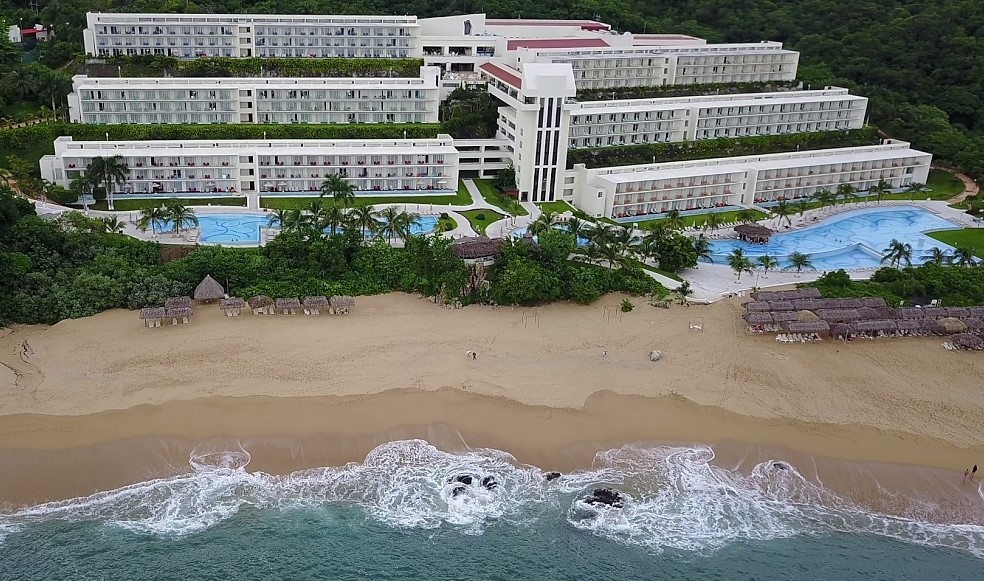
Creating a solid business plan
A well-structured business plan is important for securing investment loans in the tourism property sector. It should clearly outline the project's vision, market analysis, revenue projections, and detailed financial plans. This document not only serves as a roadmap for the business but also instills confidence in lenders, showcasing a thorough understanding of the industry and a strategic approach to project execution.Recommendations:
• Include comprehensive market research, a detailed financial model, risk assessments, and a clear timeline for project milestones.
• Highlight the unique selling propositions of the tourism property, emphasizing factors that differentiate it from competitors and contribute to its success.
Risk mitigation strategies
Risk mitigation strategies are proactive measures implemented by businesses to identify, assess, and manage potential threats to their operations. In the context of the tourism property sector, these strategies involve recognizing and addressing uncertainties that could impact the project's success.From market fluctuations and regulatory changes to natural disasters, effective risk mitigation involves developing plans and actions to minimize the impact of adverse events. This proactive approach not only safeguards the interests of investors and lenders but also strengthens the resilience and long-term viability of tourism property ventures.
Recommendations:
• Effectively identify and articulate potential risks associated with the tourism property project. This may include market fluctuations, natural disasters, or regulatory changes.
• Develop robust risk mitigation strategies that reassure lenders. This could involve diversifying revenue streams or establishing contingency plans for unforeseen events.
Demonstrating ROI
Demonstrating Return on Investment (ROI) is a critical aspect of attracting investors and securing financing in the tourism property sector. In this section, we explore concise yet effective strategies for showcasing the potential profitability and value of a project, emphasizing key financial metrics and value propositions that resonate with potential stakeholders.Recommendations:
• Provide a detailed analysis showcasing the potential return on investment for lenders and investors. This should encompass projected revenue streams, profitability margins, and a realistic timeline for achieving positive returns.
• Clearly articulate the value proposition of the tourism property. Highlight unique features that attract visitors and contribute to sustained profitability. This could include premium amenities, strategic location, or innovative sustainability initiatives.
• Present pro forma financial statements that illustrate the anticipated financial performance over a specific period. Include key performance indicators (KPIs) such as occupancy rates, average daily rates, and revenue per available room for hospitality projects.
• Outline potential exit strategies for investors, demonstrating foresight and transparency. Whether through property sale, refinancing, or other mechanisms, showcasing multiple avenues for a profitable exit can attract a broader range of investment partners.
Beyond the glittering facades and serene landscapes lie stories of strategic financial decisions, risks taken, and investments made. As the global tourism industry continues to evolve, investing in tourism properties presents both opportunities and challenges.
By understanding tourism property financing, exploring investment lending options, and implementing strategic planning, you can success in this market.
Our finance team can help your business with cutting-edge financial tools.






